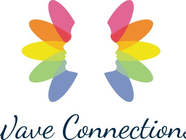"Education is the most powerful weapon that you can use to change the world”
Nelson Mandela .
At Wave Connections, we believe life story work goes beyond purely providing a life story book. We value the importance in creating a therapeutic relationship with children and their families, where they may begin to discover their identity, key relationships and coping strategies in todays world. Utilising key attachment figure throughout therapeutic life story work. Richard Rose's therapeutic life story strategies, tools are used underpinned by Dyadic Developmental Psychotherapy ddpnetwork.org/about-ddp/meant-pace/.
'A child that is lost within her own family, community and culture is neuro-developmentally vulnerable. Without a life story, a child is adrift, disconnected and vulnerable.’ Perry (2012:10).
Main Stages of Therapeutic Life Story Work:
'Information Bank': Practitioner ensure that all the child's early records within Local authority are read. A Nurture / Trauma Timeline is written and shared with foster carer, adopter and social worker. Additional information can then be added. Developmental trauma can be mapped out within the nurture/ trauma timeline and gaps in knowledge can be seen. Practitioners will work in partnership with social workers to gain information as required.
'Here and Now' a therapeutic relationship is established with a child, where art work and the 'tree of life' is drawn. Key characteristics/ hobbies, petal heads to name all key realtionships, the rainbow of 'worries, fears and dreams' is drawn up with a child. Blogs from people / teachers or friends can be taken as part of building a child's sense of identity. Through these direct working tools, a child is assisted to gain a sense of thier world as they view it today and the practitioner can determine a child's sense of resilience for therapeutic life story work. Mindfulness & Yoga strategies can be bought in at this stage: Children are taught about their '3 part brain' and nervous system, good stress v bad stress, breathing techniques and Yoga moves, shared language such as checking in with our 'sea within' is establshed to gain coping strategies and emotional regulation.
'Our scroll in life' When ready and equiped with tools required, children are aided to explore 'bite size' age appropriate timeline. This is not about purley providing information but using DDP to explore a child's meaning and internalisation of their life evnts. Adults can not lecture or provide meaning for a child. Very little reassurance is prvided at this stage, intead connection to sadness, and eotional afect of child, thus children are given permission to mourne and grieve any sense of loss. Children are supported alongside the main attachment figure to discuss their life experiences and body senses, emotions, feelings that come with this. At this stage we maybe taking a child through a bereavment cycle of loss. We generally see that 12-18 sessions are required. Using Richard Rose's techniques, we distill what is 'fact and fiction' of life events.
'Meaning making' use of Kim Goldings therapeutic stories are made. A child maybe assisted to write their own story, in making sense of their life. Children may use a charatcer of their own choosing and make a story line surrounding that character. Through story making the child can make greater sense of their trauma. They may relate how experiences today can trigger their trauma. Other children may choose alternative activities to make sense of their life such as a paper chain, or scrap model, collage. Gaining greater awareness has potential to reflect, gain insight and move forwards for greater sense of self. Enhance relationships, trust and heal the relationship struggles that may exist with peers.
'All about me book' A large art book is used to have a focus in which all of the above is processed. Richard Rose discusses having wallpaper in which to draw the life line. Within the large art book, the life line, tree of life is explored. Photos and meorabilias are placed within the art book.
'Structure of a session' Similar to that of Theraplay. It is important to have a middle, beginning and end of session. Blankets, cushions and games / proprs are used within the session and a blankets lays out the perametoers of the session. Main carer, child and practitioner walk into the room, we do a game and check in first. The main session takes place, and we ensure we end on a game or a 'shifting energy' excercise'. We then leave the room to ensure the child knows the session has ended.
All therapeutic life story work has overview of a child psychologist and practitioners have thei own clinical supervision. Consent forms are signed by the family to record sessions and ensure the family are aware that sessions will be discussed within clinical supervision.
Please see poster below that provides an overview of Therapeutic Life Story work used and ideas that children can view to gain an oversight of sessions we complete together.
poster6_tlsw_-poster-jodie-park.pdf

- SOMEONE ONCE SAID - 'the mind works like a parachute, it works best when it's open!'anon
|
General Enquiries: waveconnections@outlook.com
Telephone Number: 07850 732303 |
Site powered by Weebly. Managed by FreeLogoServices.com
